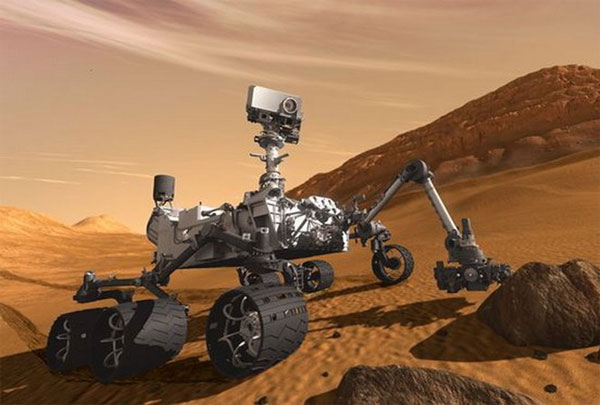NASA revealed seven devices used on Mars 2020
The US Aerospace Agency (NASA) said on July 31 that NASA's 2020 exploration ship (Mars 2020) will carry 7 devices to conduct unprecedented polls "The Planet Red " , which has a device capable of generating oxygen for humans.
According to NASA, these devices were selected from 58 probes that researchers and engineers around the world proposed earlier this year with development costs estimated at $ 130 million.

Photo: nationalgeographic.com
The most notable of these devices is the Mars Oxygen ISRU Experiment (MOXIE) , a device capable of producing carbon dioxide from carbon dioxide in the atmosphere on Mars.
Another device that attracts a lot of attention from Mars researchers is Mars' environmental dynamics analyzer (MEDA), which is composed of a sensor capable of measuring temperatures, wind speed and direction, pressure, relative humidity, as well as the size and shape of Mars dust particles.
In addition to the above two devices, the Mars 2020 exploration ship will also be equipped with Mastcam-Z, a camera system with features that provide panoramic images, floating images, and can zoom in or out on objects. form; SuperCam camera with the function of taking pictures, analyzing chemical composition and mineralogy helps remotely detect the presence of organic matter; X-ray fluorescence spectrometer identifies chemical elements; Spectroscopic analysis of habitats to identify minerals and detect organic components; and the Radar under-surface exploration radar (RIMFAX) controlled from the ground, providing a high-resolution image of the geological structure of the layer below the Martian surface.
According to William Gerstenmaier, the deputy director of NASA's humanitarian exploration operations, the Mars 2020 exploration ship will help relieve the astronauts' questions about Mars's environmental issues and help them. Test the necessary technologies before landing, explore on the Red Planet and return to Earth.
- Close up of the amazing surface on Mars in NASA's latest series
- NASA is about to announce the discovery of a tremor about Mars
- NASA director revealed the first person to Mars
- NASA revealed the mission of the next Mars probe
- NASA plans to 'eavesdrop' on Mars
- NASA has just taken a monstrous photo that looks like a fake about Mars
- The true message of the moon missions that NASA revealed in Orion video on Mars
- NASA revealed technology to send people to Mars
- Robot explorer Mars moves worm-type
- Stunning images from Mars
- NASA announced plans to send people to Mars
- 5 reasons why people need to go to Mars
 Van Allen's belt and evidence that the Apollo 11 mission to the Moon was myth
Van Allen's belt and evidence that the Apollo 11 mission to the Moon was myth The levels of civilization in the universe (Kardashev scale)
The levels of civilization in the universe (Kardashev scale) Today Mars, the sun and the Earth are aligned
Today Mars, the sun and the Earth are aligned The Amazon owner announced a secret plan to build a space base for thousands of people
The Amazon owner announced a secret plan to build a space base for thousands of people